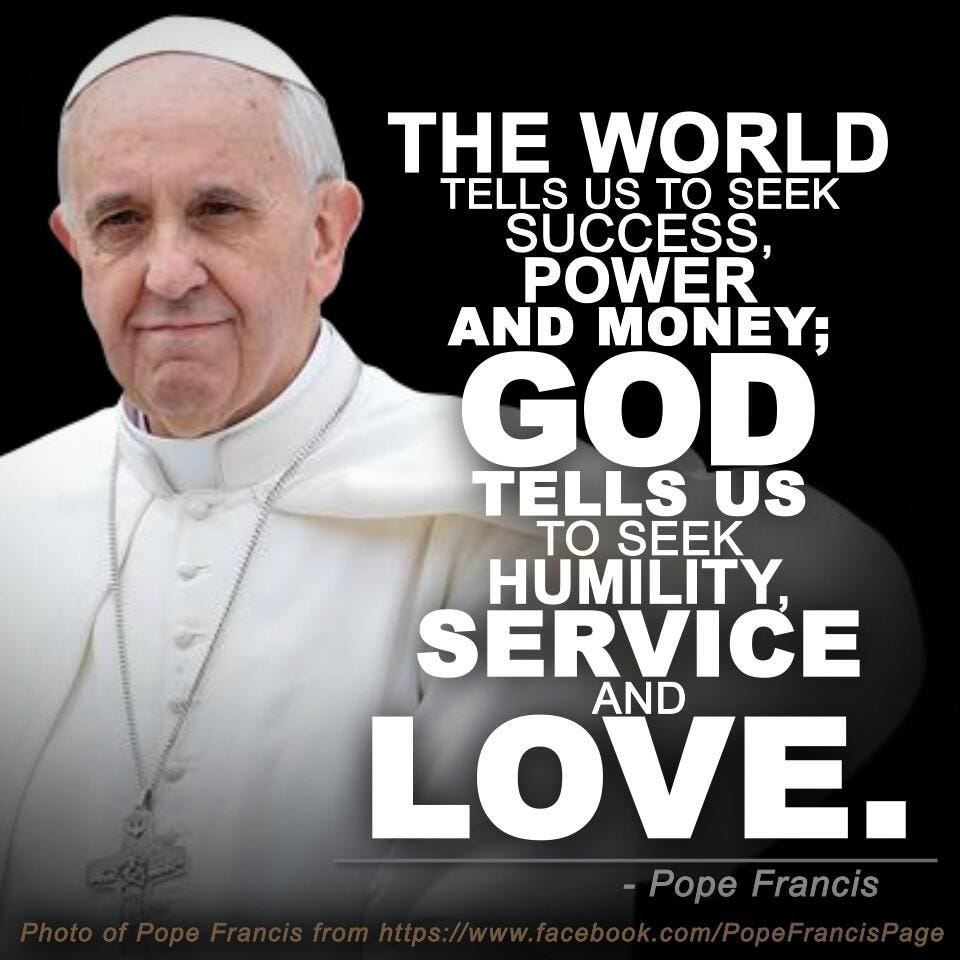Synodality: Manifest the kingdom of God here and now.
Pope Francis views synodality as a fundamental aspect of the Church’s nature and mission in the third millennium. According to him, synodality involves walking together, listening to one another, and discerning the will of God as a Christian community.
SEE-JUDGE-ACT
Key aspects of Pope Francis’ understanding of synodality include:
Guided by the Holy Spirit: Pope Francis stresses that synodality has a spiritual dimension and is not merely a human process. He states, “Without the Holy Spirit, there is no synodality.”
Missionary focus: Synodality is crucial for revitalizing the Church’s evangelizing mission and engaging the People of God.
Dialogue and listening involve mutual listening among all members of the Church, with each person having something to learn.
Ecumenical value: Pope Francis believes that synodality has the potential to enhance relations with other Christian churches, especially the Orthodox.
Discernment: Synodality encompasses communal discernment to perceive where the Spirit guides the Church.
Pope Francis emphasizes that synodality is not merely about conducting surveys or holding debates; it is a spiritual journey guided by the Holy Spirit. He regards it as a crucial aspect of the Church, providing a framework for understanding hierarchical ministry and acknowledging the role of all believers in evangelization.
As historians, we look back at Joseph Cardijn. Yes, he did not directly use the term “synodality,” as it is currently understood in the context of the Catholic Church. However, his ideas and methodologies significantly influenced the development of synodal concepts. Cardijn’s approach, particularly his “see-judge-act” method, laid the necessary groundwork for what would later be recognized as synodal practices.
The “see-judge-act” methodology introduced by Cardijn became a foundational framework for confronting injustice and engaging with social issues. This approach closely aligns with synodal principles in several ways:
Participation: Cardijn emphasized the importance of lay involvement in the Church’s mission, which resonates with the synodal focus on including all members in its processes.
Observation and Discernment: Cardijn’s method’s “see” and “judge” components parallel the synodal emphasis on observing the world’s realities and discerning God’s will within the community.
Action-oriented: Cardijn’s ” act ” method aligns with the synodal call for the Church to be responsive and engaged in the world.
Collaborative Approach: Cardijn’s vision of lay apostolate emphasized the cooperation between laity and clergy, a crucial synodality aspect.
As many of you know, the mantra in my blog posts, websites, and other social media platforms is ‘innovate, educate, collaborate.’ This powerful approach is a framework and a source of inspiration and motivation for organizations to drive growth, adapt to change, and create value. It encourages a cyclical process of continuous improvement and development, igniting God’s Spirit of innovation and collaboration in all of us.
Organizations should continuously pursue new solutions, nurture innovative concepts, and improve processes. This requires creativity, problem-solving, and pushing boundaries to create more efficient, effective, impactful products, services, and processes.
Emphasize the significance of sharing knowledge, enhancing skills, and fostering a culture of continuous learning. Organizations should establish interactive learning environments, innovate teaching methods, and motivate employees to share their knowledge and expertise.
Collaborate: This aspect emphasizes the strength of collaboration, which utilizes diverse perspectives and creates synergy. Collaboration involves uniting individuals with varying ideas, knowledge, skills, and experiences to address challenges and foster innovation.
Let’s discuss the advantages of this method, which can introduce a wave of optimism and hope to your organization:
Improved problem-solving: Diverse teams can more effectively define and understand challenges, resulting in more comprehensive solutions.
Enhanced creativity: Bringing together individuals from diverse backgrounds fosters new ideas and generates momentum for change.
Enhanced collaboration: Fosters shared ownership and mitigates risks, improving the implementation of innovative ideas.
Continuous improvement: This cycle promotes a culture of constant learning and adaptation, which is essential for success in a rapidly changing world.
Implementing the framework:
Create adaptable and inclusive business models that promote collaboration and teamwork.
Foster a psychologically safe environment for collaboration and innovation.
Engage everyone in decision-making processes and align them with the organization’s strategic goals.
Cultivate a culture of trust, respect, and a shared vision that fosters innovation.
By adopting this approach, your organizations can tap into their collective potential, tackle challenges more effectively, foster a brighter, more innovative future, and manifest the kingdom of God here and now.


